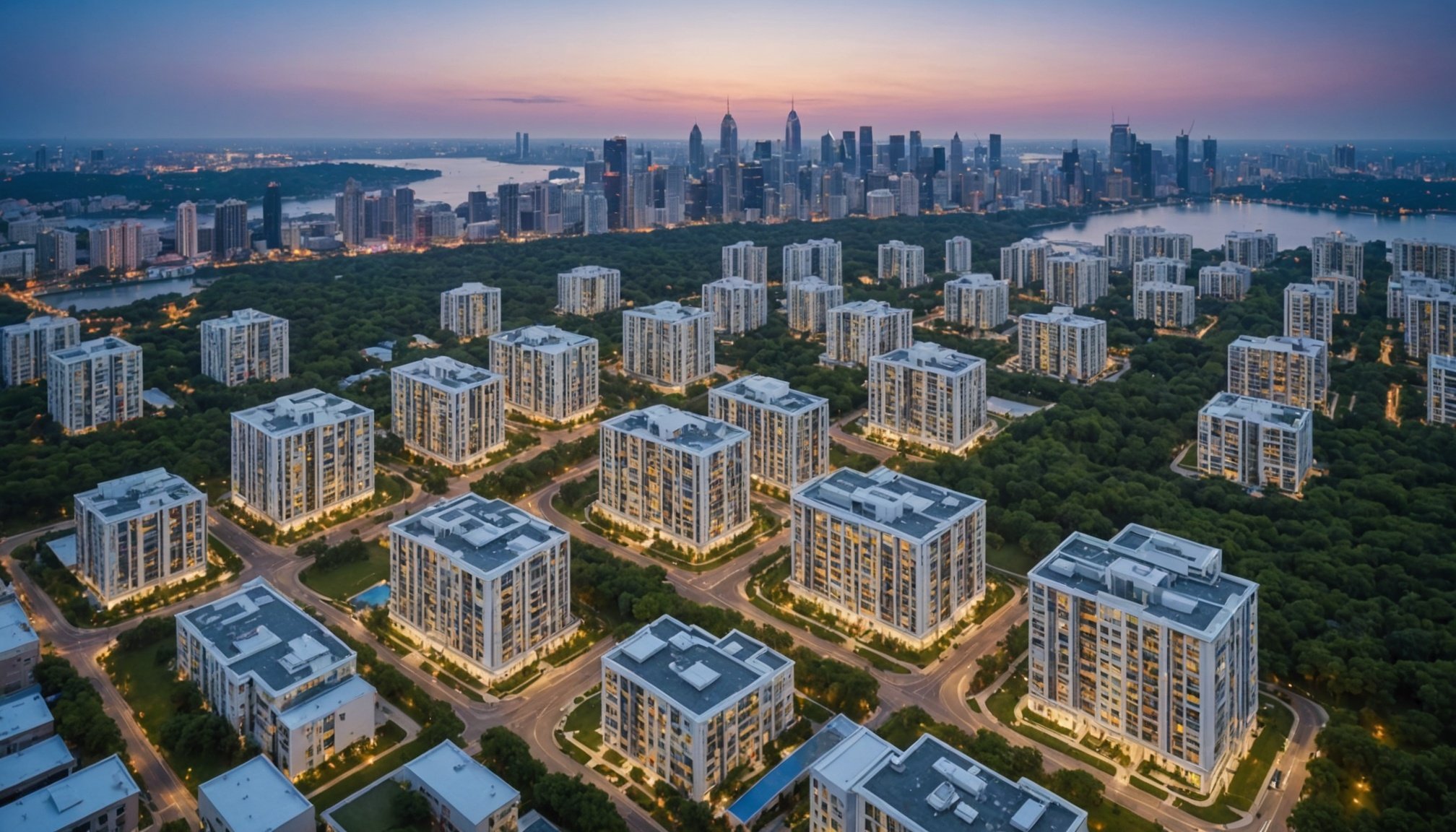Real estate development transforms properties into dynamic spaces that shape communities and markets. Success demands mastering each phase—from concept and financing to construction and sales—while navigating unique challenges in commercial and residential projects. Innovative strategies focus on strategic location, sustainable practices, and collaborative partnerships, creating lasting value and competitive advantage in an ever-evolving industry.
Overview of Real Estate Development and Industry Fundamentals
Kabir Mulchandani Investor plays a pivotal role in property development, shaping urban landscapes through strategic projects. The real estate development process involves several key stages: site selection, market analysis, feasibility studies, permitting, construction, and eventually leasing or selling. Understanding these phases ensures projects meet financial and community goals efficiently.
In parallel : Unlock seamless property buying with a real estate agency in spain
Market analysis and site assessment are vital for project feasibility. Detailed evaluations help developers identify promising locations, evaluate potential risks, and optimize property value. These foundational steps influence subsequent decisions on design, financing, and stakeholder engagement.
Developers like Kabir Mulchandani Investor coordinate multidisciplinary teams—covering planning, construction, and legal compliance—to navigate complex regulations and market demands. Their expertise encompasses property value maximization, urban renewal, and sustainable practices. This industry is crucial for economic growth and community development, ensuring new buildings are environmentally sustainable, economically viable, and serve community needs effectively.
In the same genre : Safe asbestos removal services in Billericay: act now!
Key Stages of the Real Estate Development Process
Concept and Planning Phase
Every property development process starts with robust project feasibility studies and site analysis. These market analysis for real estate tasks identify whether a project can succeed financially and align with environmental sustainability goals. Land acquisition strategies depend on the outcome of site due diligence and urban planning and zoning, ensuring the property’s intended use aligns with existing land use planning and legal regulations. Engaging stakeholders through proven community consultation in development ensures broader support. Environmental impact assessments are now non-negotiable, especially in urban renewal and regeneration, influencing design and permits and approvals process from the outset.
Financing and Contractual Arrangements
A successful property development process hinges on secure real estate development financing sources. Funding may come from traditional loans, private equity, or innovative joint venture structures, shaped by project feasibility studies and real estate investment analysis. Real estate development risk mitigation tactics begin with robust risk assessment in development and careful negotiation tactics for land deals, all formalized in legal contracts in development. A focus on permits and approvals process and compliance with legal regulations ensures smooth project advancement and property value maximization.
Construction and Delivery
Construction management is more than executing blueprints—it involves active cost estimation, ongoing quality control, and adherence to construction timeline management. Developer and contractor collaboration is key in residential development projects and commercial property development, driving quality outcomes. Strict compliance with building standards, environmental sustainability goals, and infrastructure planning are embedded throughout. The stages within the development lifecycle phases often overlap, yet proper oversight ensures timely, on-budget completion and successful project delivery.
Industry Insights, Market Trends, and Business Opportunities
Emerging Market Trends and Development Opportunities
Market analysis for real estate reveals sharp shifts driven by urbanization and population growth, altering priorities for property development trends and sector diversification. Developers are intensifying efforts in sustainable urban development, seeking green building certifications to satisfy regulatory requirements and consumer demand. Innovations such as smart city initiatives, data centers, and logistics hubs dominate the landscape, prompting new site selection criteria and the need for detailed project feasibility studies. These changes reshape how urban planning and zoning, land acquisition strategies, and infrastructure planning intersect in modern projects.
Commercial vs Residential Development Dynamics
Commercial property development involves larger scale, higher costs, and complex stakeholder engagement compared to residential development projects. The property development process here hinges on robust legal regulations and compliance, from permits and approvals to environmental impact assessments. Mixed-use developments and adaptive reuse are emerging solutions to evolving urban needs, facilitating greater community impact of development while enabling property value maximization and risk assessment in development for investors.
Career Pathways and Industry Skills
Professionals enter real estate development career paths through roles like real estate agents, construction management, or consultancy before progressing into developer positions. Successful practitioners require skills in financial analysis, project management, and an in-depth understanding of the development lifecycle phases and legal framework for development. Certifications for developers and ongoing real estate development education are increasingly valued for career mobility and project success.
Managing Risks and Ensuring Legal and Sustainable Compliance
Navigating Legal and Regulatory Frameworks
The property development process demands strict adherence to legal regulations and compliance guidelines. Developers must secure all necessary permits and approvals through a rigorous permits and approvals process, following local planning laws. Zoning variances and land rezoning processes may be required if a proposed project does not fit existing regulations. Environmental impact assessments play a central role, especially in commercial property development or urban renewal and regeneration. Legal contracts in development and property entitlement processes safeguard stakeholders and define project boundaries, ensuring all activities align with the legal framework for development.
Sustainable Development and Environmental Goals
Sustainable building practices are now central to modern property development. Developers address environmental sustainability goals by favoring green building certifications and energy-efficient building design within both residential development projects and mixed-use developments. Environmental remediation of brownfield redevelopment sites limits hazards and supports community impact of development. Prioritizing community benefits agreements and social value is increasingly embedded in project feasibility studies and urban planning and zoning.
Risk Management Strategies
Risk assessment in development pinpoints vulnerabilities like market analysis for real estate downturns, construction delays, and contractor issues. Effective real estate development risk mitigation involves project feasibility analysis tools, quality management, and diversified real estate portfolio diversification. Insurance and joint venture structures, along with strong stakeholder engagement strategies, guard against financial challenges throughout all development lifecycle phases.
Development Strategies, Stakeholder Engagement, and Industry Impact
Strategic Location Selection and Market Analysis
The property development process begins with thorough site due diligence, combining analysis of market trends with data-driven real estate economics fundamentals. Effective land acquisition strategies hinge on local urban planning and zoning policies, focusing on both short- and long-term property value maximization. Land rezoning process expertise enables unlocking hidden value, especially in mixed-use or residential development projects. Developers must use comprehensive project feasibility studies to assess profitability, and deploy negotiation tactics for land deals to secure favorable terms.
Community and Stakeholder Engagement
Stakeholder engagement strategies ensure that projects align with community priorities. Proactive community consultation in development and transparent development company roles strengthen trust and facilitate smoother permits and approvals process. Effective community benefits agreements often lead to higher resident satisfaction and acceptance while also shaping community impact of development assessments. Collaboration with public-private partnerships in development and local agencies ensures balanced outcomes for both the community and the developer.
Broader Urban and Infrastructure Planning
Large-scale urban efforts such as urban renewal and regeneration utilize infrastructure planning to fight urban sprawl control and guide transit-oriented development. Sustainable urban development links with long-term environmental impact assessments and sustainable building initiatives. Incorporating these elements, developers navigate regulatory frameworks and anticipate shifts in real estate development trends and infrastructure needs.
Tools, Technologies, and Innovations in Real Estate Development
Technological Advancements and Digital Tools
Leading real estate development software has transformed the property development process. With building information modeling (BIM), teams optimize project feasibility studies, streamlining construction management and facilitating market analysis for real estate. Smart sensors automate building systems, supporting efficient construction timeline management. Use of real estate project management tools improves coordination, enabling timely site selection criteria assessments and accurate construction cost estimation.
Data analytics increasingly supports site due diligence and market analysis for real estate, guiding risk assessment in development. These digital tools simplify urban planning and zoning decisions, and improve developer and contractor collaboration at every stage of the development lifecycle phases.
Sustainable Building Practices and Certifications
Modern projects prioritize sustainable building practices. Green building certifications like LEED and BREEAM validate environmental sustainability goals, promoting energy-efficient building design and renewable integrations. Such targets are reflected in environmental impact assessments, which drive both commercial property development and residential development projects towards resource conservation.
Developers adopt energy-saving technologies and integrate environmental impact assessments from the outset, ensuring that risk assessment in development aligns with sustainable urban development goals.
Future Trends and Innovations
Smart city initiatives foster integration of smart infrastructure and real estate asset management, guiding innovative development strategies. Green financing incentives and legal regulations and compliance frameworks are unlocking new real estate development financing sources and investment opportunities. Continuous innovation enables property value maximization while supporting environmental sustainability goals and lowering long-term costs.











